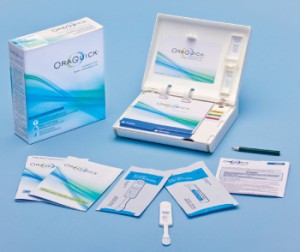People with a negative test should also be wary. A negative test does not mean a person is free from HIV. Susan Buchbinder, MD, the Director of HIV Research Section at the San Francisco Department of Public Health, and a former panel member on the FDA’s advisory committee that recommended OraQuick’s approval, said OraQuick can't determine if a person has contracted HIV within the past three months.
"If they [test] HIV-negative but may have had recent exposures, they have to know the test may take a while to become positive," Buchbinder said. "It may take several months. If they’ve had a very recent exposure, getting a negative test result is not enough.”
Regardless of the diagnosis, Buchbinder urges people to quickly seek an additional test to confirm their results with a doctor. She said she is also concerned about how people will perceive their test results, and the potential effects of stigma. “There could be some psychological harm [and] there could be social harm if somebody found out that you were testing and thereby inferred something about you."
As opposed to being tested at a clinic or in a hospital, Buchbinder said people using in-home HIV test won’t have the benefit of a doctor or health care provider’s counseling services when they get their results.
However, Buchbinder said people do have access to a 24-hour, toll-free number linking them to a supportive services. She added that it may be helpful for people to test with someone they trust, and would feel comfortable being close to, once they get their results.
Though there are concerns, Buchbinder said she believed that the new test has the potential to change people’s risk behaviors. “It has the potential to reduce new infections by getting people who learn that they’re infected into care and treatment, and [reduces] the risk of exposure to HIV-negative individuals,” she said. “[But] we won’t know until we actually see how this rolls out.”
Buchbinder said she also hopes that OraQuick users will share all of their positive and negative experiences. “The more information we get back from the community about what’s working and what’s not working, the better able we are to build services and build programs that can support people,” she said.
The San Francisco Public Health Department is currently working on strategies to figure out the most effective means of using OraQuick in local areas where testing rates are lower and where there is a higher rate of health risk behaviors.
